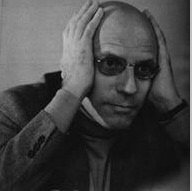Firstly, then, a little bit of background about the Nottingham lace trade.
 As Susan Ashby writes (http://www.articlevista.com/Article/The-Lace-Market-in-Nottingham/41030):
As Susan Ashby writes (http://www.articlevista.com/Article/The-Lace-Market-in-Nottingham/41030):“The first ‘stocking machine’ was invented by William Lee in Nottingham in 1685, which further developed into a ‘warp frame’ or ‘stocking frame’ in the 1700s, but the changes wrought by the Industrial Revolution left their mark on Nottingham too. Even then, it was known as a centre of fine lace making. As many as 120,000 people and their families made their living by creating stockings and bobbin lace from cotton thread in their homes, fuelled by the cotton mill built in the village of Hockley by Richard Arkwright in 1770. As the industry, like many others, shifted from the home trade of handmade lace to large-scale factories, individuals were frightened of losing their livelihood. The "Luddite" riots briefly threatened to overturn the technological and social changes that mechanization brought, and soldiers had to be posted to protect the factories and the machines, but the resistance soon passed.

Lace making reached true efficiency when John Leavers invented what came to be known as the ‘Leavers machine’ in 1814. These machines, first powered by teams of men, then by steam, gradually replaced the hand-powered frames. The factories employed predominantly male factory workers known as ‘twisthands’, who operated the 20-ton machines and kept them lubricated with graphite ("black lead") and oil. Many of the local Nottingham businesses were focused solely on the finishing of lace which was made elsewhere in the East Midlands countryside; unfinished lace was often limp, tangled and dirty, and sometimes stained with the very graphite and oil that kept the machines running efficiently. The finishing tasks (bleaching, running, mending, drawing, scalloping, clipping, and cropping) were performed mainly by women, often in factory surroundings that were overheated, poorly ventilated and poorly lit; still, their hours were generally better than workers in other factory industries.
Thomas Adams, a noted Quaker, did much to reform the working conditions for the ladies in his factory, providing indoor toilets, a tea room, and a sick fund. […] By 1865, there were one hundred and thirty lace factories, with nearly as many supporting industries, and the population of Nottingham had quintupled over the previous century. At about the same time, during Queen Victoria's mourning for Prince Albert, a fashion for black lace swept the country. Throughout the early 1900s, Nottingham dominated the machine-made lace industry, with nearly all of the machine lace in the United Kingdom being produced, finished, processed or shipped through one or another of the city's lace businesses. Nearly every passenger ship that travelled across the Atlantic in those decades carried a cargo of Nottingham lace (including the Titanic).”
Marx denounces Nottingham's lace trade as an example of the exploitation of the worker by capitalism:

"Mr Broughton Charlton, county magistrate, declared, as chairman of a meeting held at the Assembly Rooms, Nottingham, on the 14th January, 1860, ‘that there was an amount of privation and suffering among that portion of the population connected with the lace trade, unknown in other parts of the kingdom, indeed, in the civilised world. … Children of nine or ten years are dragged from their squalid beds at two, three, or four o’clock in the morning and compelled to work for a bare subsistence until ten, eleven, or twelve at night, their limbs wearing away, their frames dwindling, their faces whitening, and their humanity absolutely sinking into a stone-like torpor, utterly horrible to contemplate… We are not surprised that Mr Mallet, or any other manufacturer, should stand forward and protest against discussion…. The system, as the Rev. Montagu Valpy describes it, is one of unmitigated slavery, socially, physically, morally, and spiritually…. What can be thought of a town which holds a public meeting to petition that the period of labour for men shall be diminished to eighteen hours a day?" (Marx, Capital, Vol. I, ed. David McLellan, p. 154)
Can anyone tell us, do the Assembly Rooms at Nottingham still exist? And should they record the meeting described in detail by Marx in the form of some recognition of the people who suffered to generate the wealth that established Nottingham as the trading centre of the East Midlands? All comments welcome!



 Utopia Dive Village, Honduras, opened 2007. A scuba diving and luxury vacation resort in the Caribbean, on the island of Utila’s ‘pristine beachfront.’ The resort has a blog, ‘Building Our Place in the Sun,’ detailing its construction, the diving on Utila and the local Utilian carnival parade (http://www.buildingourplaceinthesun.blogspot.com).
Utopia Dive Village, Honduras, opened 2007. A scuba diving and luxury vacation resort in the Caribbean, on the island of Utila’s ‘pristine beachfront.’ The resort has a blog, ‘Building Our Place in the Sun,’ detailing its construction, the diving on Utila and the local Utilian carnival parade (http://www.buildingourplaceinthesun.blogspot.com).











